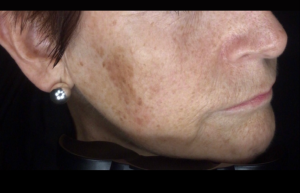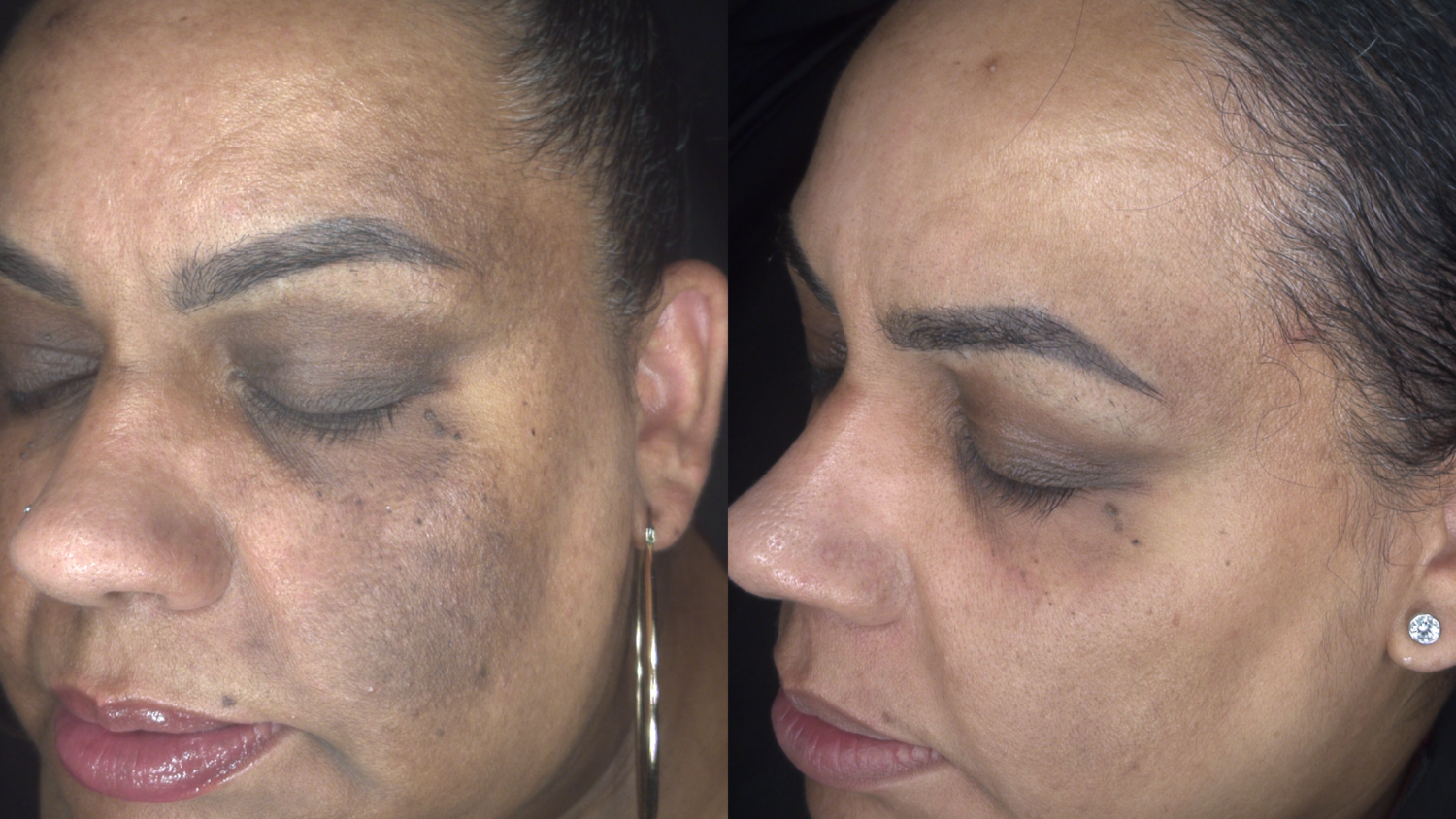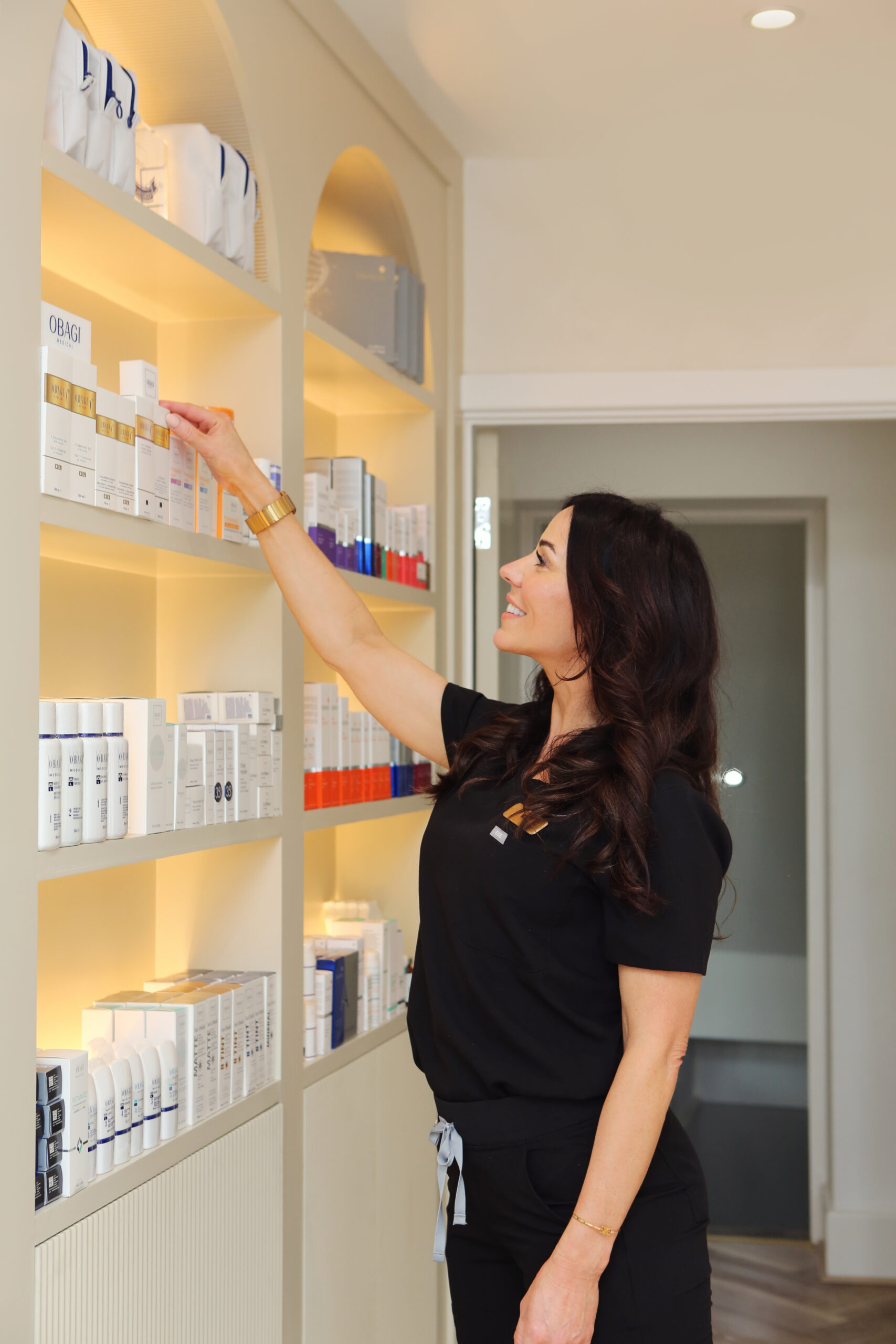Fiji Skin & Laser Clinic News
15th Jan 2023
What is Hyperpigmentation?
You can find pigmentation or hyperpigmentation anywhere on the body. They are red marks or brown marks on the skin that can vary in size, they create an uneven skin tone. It can massively impact confidence as it can be difficult to cover with make up. Hyperpigmentation can make people look much older than their years.
The most common types of pigmentation are Melasma, Chloasma, Sunspots, Age Spots, Liver Spots, Post Inflammatory Hyperpigmentation (PIH), Post Inflammatory Erythema (PIE) and Freckles. When pigmentation is left untreated it will get worse with age. This is because the melanin/pigment is pushed closer to the surface of the skin over time. Pigmentation cannot be cured but with the correct professional advice, it can be managed effortlessly. With our help you can experience a flawless more even skin tone, as long as treatment and skincare are maintained.
What causes Hyperpigmentation?
Hyper pigmentation is caused by an over production of pigment (known as melanin) from the skin cells. Pigment is formed by the body to protect the nucleus of the skin cell from damage and skin cancer. There are many causes of hyper pigmentation such as:
- Unprotected sun exposure
- Hormones
- Skin trauma
- Medications
1) Unprotected Sun Exposure
Applying SPF daily protects our skin from excessive pigmentation formation. Sun exposure (UV Light) causes more pigment to be made to block the UVA & UVB light from reaching the cell nucleus. There is no such term as a ‘healthy tan’. A tan shows that the skin has been over exposed to sunlight and has caused damage. Freckles are generally caused by sun damage (often in childhood) but may also be genetic. Freckles are very common in lighter skin tones and red hair colouring . This is due to the type of melanin (pigment) they are born with. Sun spots, age spots and liver spots are hyperpigmentation caused by excessive sun exposure.

Pigmentation caused by sun damage
2) Hormones:
Melasma and chloasma (also known as the pregnancy mask) are forms of hyperpigmentation caused by hormonal imbalances. Ladies often experience Melasma on the face during and or after pregnancy. The difference between Melasma and hyperpigmentation is that Melasma is always symmetrical on the face, it’s almost like a butterfly affect. It is generally defined by brown patches on the lip, forehead, cheeks and chin.
3) Skin trauma
Popping spots and popping pimples causes trauma to the skin which can cause post inflammatory hyperpigmentation. There are two types of Post Inflammatory Pigmentation which may appear as; brown marks on the skin Post Inflammatory Hyperpigmentation (PIH), or red marks on the skin Post Inflammatory Erythema (PIE). These two types of pigmentation will generally reduce and go away on their own, but it can take several months. To prevent any post inflammatory hyperpigmentation, stop being a pimple popper! Even blackhead popping is a no go, squeezing blackheads is forbidden, please refrain from all spot squeezing!!!!
4) Medications
Certain medications can also cause hyperpigmentation. If you are taking any medications and you are concerned with the cause of your hyperpigmentation, we recommend you visit the NICE website. If a medication is photosensitive then it can be a contributing factor in making your pigmentation worse. Photo sensitive medications also give you a higher risk of developing skin cancer.
How to treat hyperpigmentation & pigmentation:
We offer a full range of clinical treatments which are suitable for all skin of colour. Clinical treatments intensively treat the skin, compliment skincare at home and get you results faster. For complete skin rejuvenation in the fastest time possible we can also combine advanced skincare (cosmeceutical or medical), clinical treatments with skin specific supplements. Our recommendations will help minimise the current appearance of pigmentation, but also stop the formation of any new pigmentation.
You will be left with a more even glowing skin tone, with out feeling the need to wear make up! We always recommend starting with an initial skin consultation so that we can ascertain which type of hyperpigmentation you have. There are 3 factors which we have to assess during this skin consultation. These 3 factors allow us to recommend the best treatment protocol for each client, these are;
- Clients skin type (Fitzpatrick Scale)
- Type of hyperpigmentation
- How quickly a client would like to see results
Clinical Treatment Options
Dye-SR IPL Treatments (only suitable for Fitzpatrick 1-4)
Obagi Medical Prescription Skincare- We offer Obagi 14 skin transformation kits!
Environ Skincare
Skincare at Home care
- To prevent further damage to the skin a skin specific broad spectrum SPF is essential to protect the skin daily.
- Apply a form of vitamin A that is suitable to the client’s needs, this may be a Retinol or prescription strength vitamin A for example. Vitamin A makes skin cells function better, making skin healthier. It also lifts and exfoliates the pigmentation.
- A high strength vitamin C is also required to reduce hyperpigmentation. In more severe cases (Melasma) or for faster results, we would recommend a prescription instead of or as well as Vit C.
- To enhance results and to increase product absorption, we always recommend a skin specific exfoliator such as Lactic Acid, Glycolic Acid and Salicylic Acid.
You can be reassured that you will get results with either skincare or clinical treatments with Fiji Skin Clinic. Read more on our hyperpigmentation treatment here. By combining the two you just get results faster! Check out our Google Reviews to see!
More on FIJI clinic
We are a leading skin clinic in Sutton Coldfield, Birmingham running for almost 20 years with a team of dedicated qualified specialists catering to your every need and help you achieve your dream body goals! Read more about our treatments including Laser Hair Removal, HIFU , HydraFacial's and much more!.
Contact us
Tel: 0121 350 8482
Email: info@fijiskinclinic.co.uk




